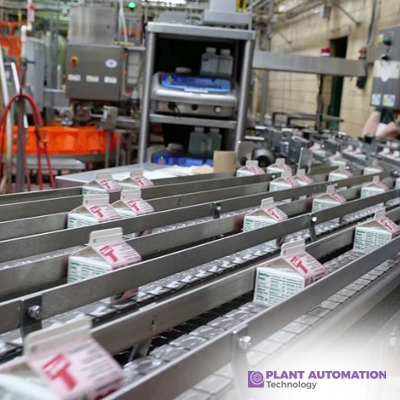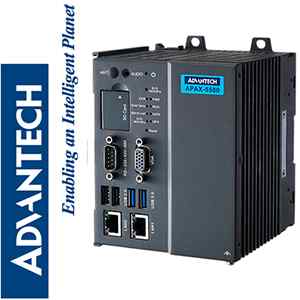Efficiency in Motion: Conveyors & Conveying Equipment for Streamlined Operations

In the realm of industrial and manufacturing processes, the optimization of efficiency is paramount. One key aspect of this optimization is the efficient movement of materials, goods, and products within a facility. Conveyors and conveying equipment play a pivotal role in achieving streamlined operations by enabling the seamless transfer of items from one point to another. This article delves into the significance of efficiency in motion, explores the various types of conveyors and conveying equipment, discusses their benefits, and highlights best practices for maximizing their effectiveness.
A. Understanding Efficiency in Motion
Efficiency in motion refers to the ability to move materials and products through a production or distribution process in the most effective and timely manner possible. It encompasses aspects such as minimizing downtime, reducing bottlenecks, optimizing throughput, and enhancing overall productivity. Conveyors and conveying equipment contribute significantly to achieving these goals by automating the movement of goods, thereby eliminating manual handling, reducing errors, and increasing operational speed.
B. Types of Conveyors and Conveying Equipment
Belt Conveyors: These are perhaps the most common type of conveyor system, consisting of a continuous loop of material (the belt) that moves between two pulleys. Belt conveyors are versatile and suitable for a wide range of applications, including transporting bulk materials, packages, and irregularly shaped items.
Roller Conveyors: Utilizing rollers mounted on a frame, roller conveyors facilitate the smooth movement of items along a predetermined path. They are ideal for conveying heavy loads and are commonly used in warehouses, distribution centers, and manufacturing facilities.
Screw Conveyors: Screw conveyors feature a rotating screw or auger that transports materials along its length. They are efficient for handling bulk materials, powders, and granular substances, making them valuable in industries such as agriculture, mining, and food processing.
Chain Conveyors: Chain conveyors use chains to move items along a track, offering durability and the ability to handle heavy loads. They are suitable for applications where high throughput and reliability are essential, such as automotive assembly lines and industrial machining operations.
Pneumatic Conveyors: Operating on compressed air or gas, pneumatic conveyors transport materials through pipes or tubes. They are ideal for conveying powders, grains, and other fine materials in a controlled manner, often used in industries like pharmaceuticals and chemicals.
Overhead Conveyors: These systems suspend items from an overhead track, allowing for efficient movement in limited floor space. Overhead conveyors are commonly used in garment manufacturing, automotive painting lines, and storage facilities.
C. Benefits of Conveyors and Conveying Equipment
Increased Productivity: By automating material handling tasks, conveyors reduce manual labor requirements and enable faster and more consistent throughput.
Space Optimization: Conveyors can be designed to utilize vertical space efficiently, minimizing floor footprint and maximizing storage or production areas.
Improved Safety: Automated conveying systems reduce the risk of injuries associated with manual lifting, pushing, or carrying heavy loads.
Enhanced Quality Control: Conveyors facilitate the controlled movement of goods, reducing the likelihood of damage or product defects during handling.
D. Best Practices for Maximizing Efficiency
Proper Maintenance: Regular maintenance and inspections are crucial to ensuring the smooth operation of conveyors. This includes lubrication, alignment checks, and timely replacement of worn components.
Optimized Layout: Designing an efficient layout that minimizes material transfer distances and eliminates unnecessary stops or detours can significantly improve overall efficiency.
Integration with Automation: Combining conveyors with automation technologies such as sensors, robotics, and software systems enhances process control, reduces cycle times, and enables real-time monitoring and optimization.
Employee Training: Providing comprehensive training to operators and maintenance personnel ensures they can operate conveyors safely, troubleshoot issues effectively, and maximize equipment uptime.
Continuous Improvement: Implementing a culture of continuous improvement involves regularly assessing performance metrics, gathering feedback from stakeholders, and implementing upgrades or modifications to enhance efficiency over time.
E. Future Trends and Innovations
The future of conveyors and conveying equipment is marked by advancements in technology that further enhance efficiency, flexibility, and sustainability. Some emerging trends include:
IoT Integration: Conveyors equipped with Internet of Things (IoT) sensors enable predictive maintenance, remote monitoring, and data-driven optimization for improved reliability and performance.
Modular and Flexible Designs: Modular conveyor systems allow for easy scalability and reconfiguration to accommodate changing production demands and layouts.
Energy Efficiency: Conveyors designed with energy-efficient components and systems contribute to sustainability goals by reducing power consumption and environmental impact.
In conclusion, efficiency in motion achieved through the strategic deployment of conveyors and conveying equipment is instrumental in driving operational excellence across industries. By embracing technological advancements, adopting best practices, and prioritizing continuous improvement, organizations can unlock new levels of productivity, safety, and competitiveness in their material handling processes.







